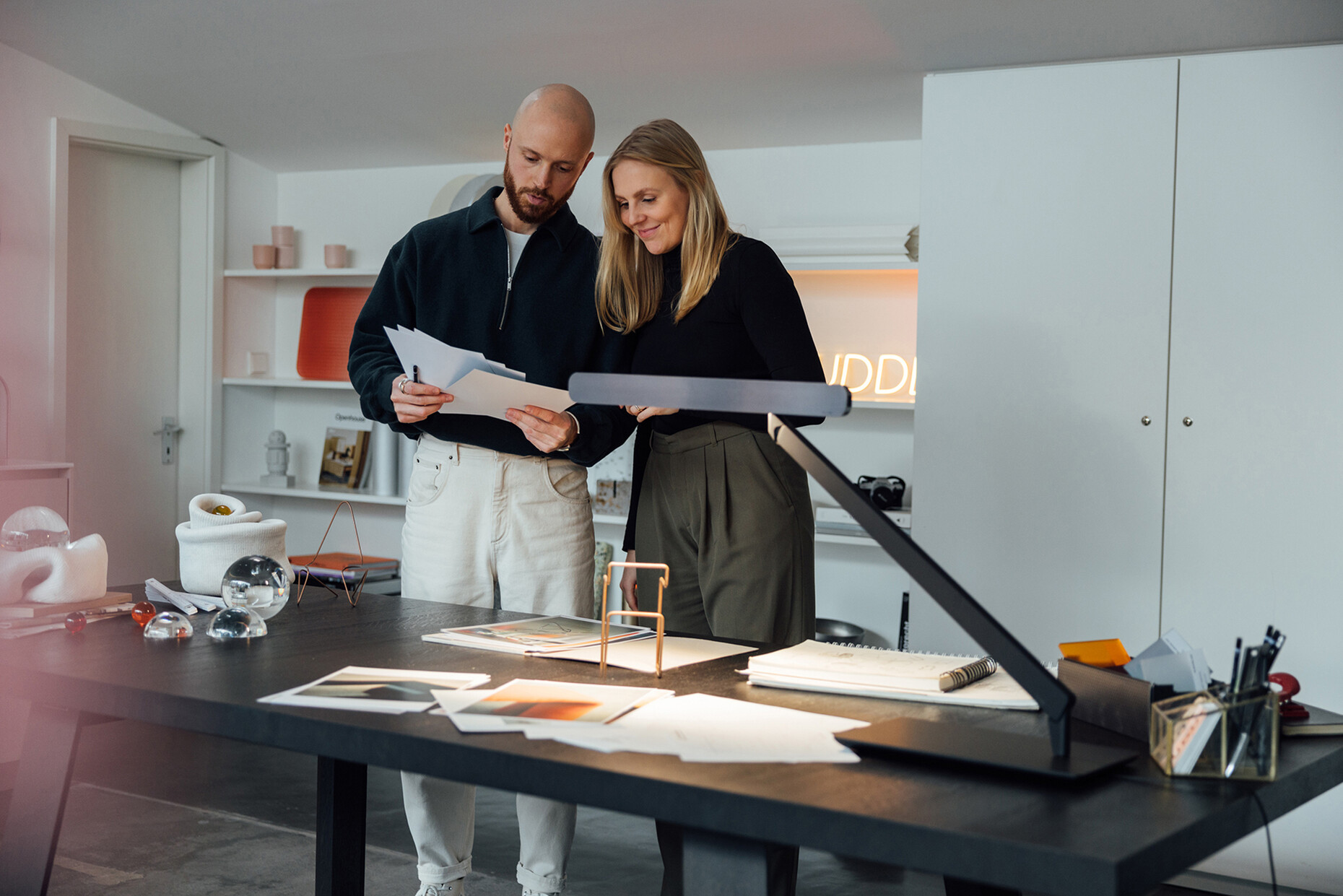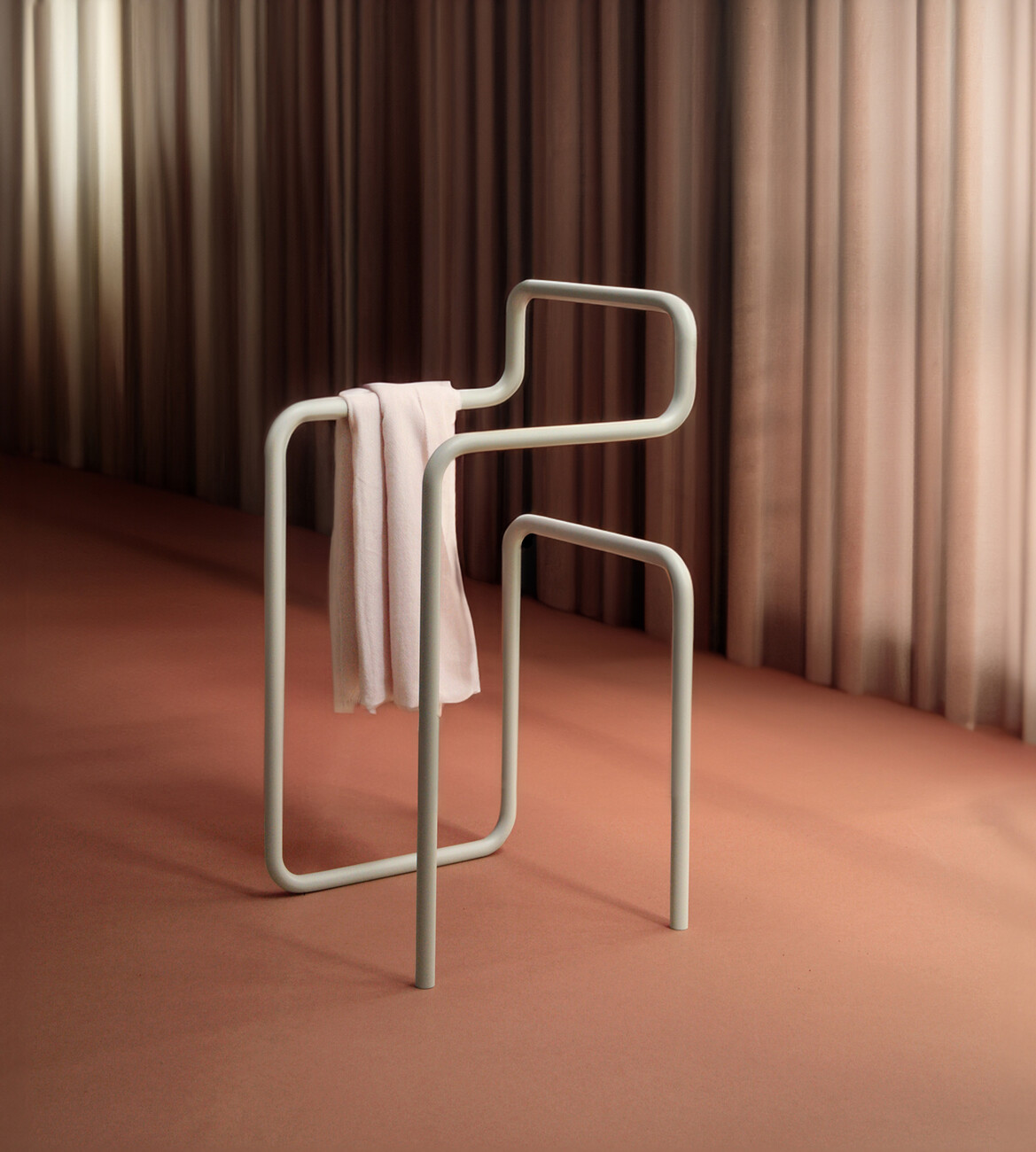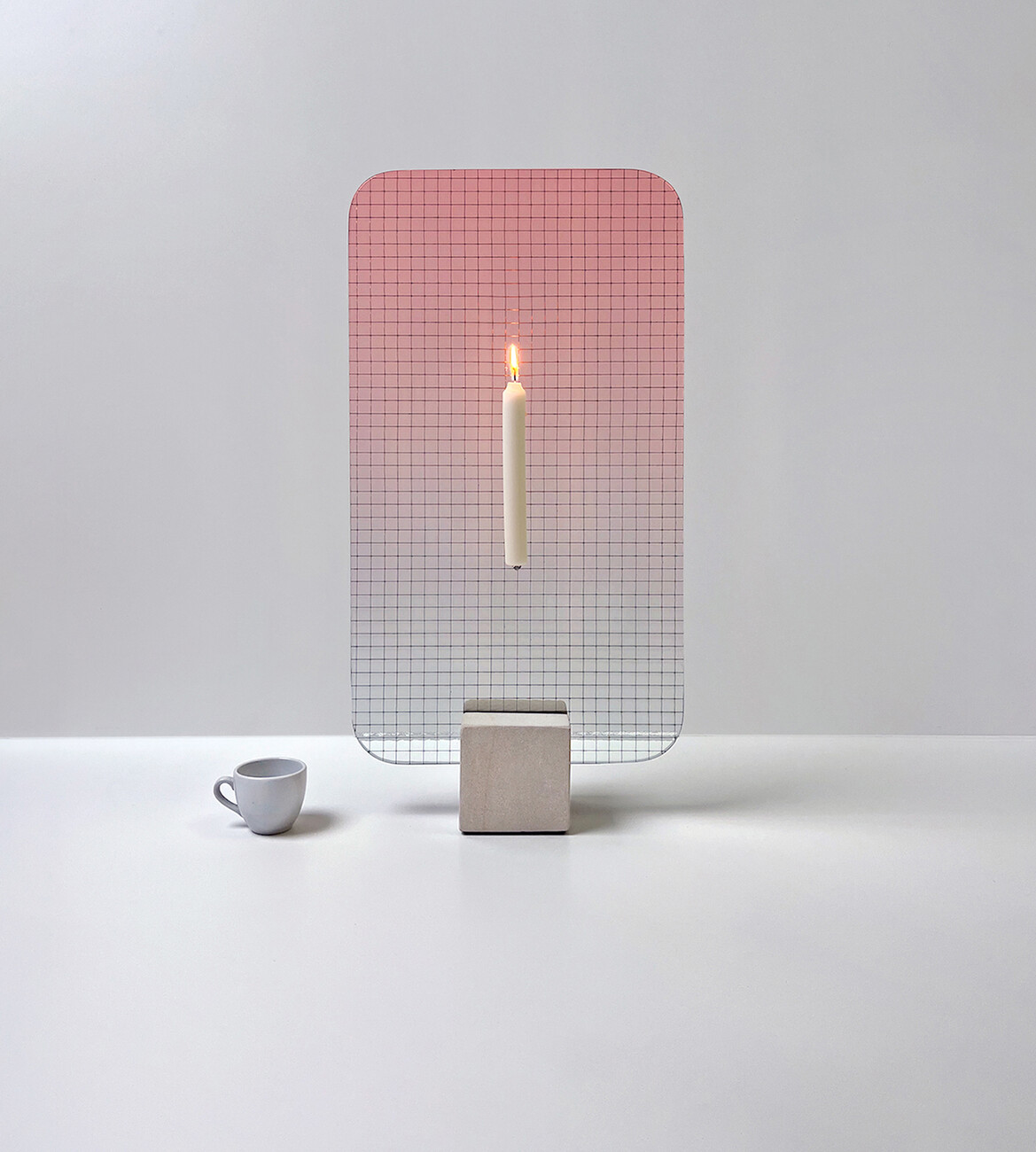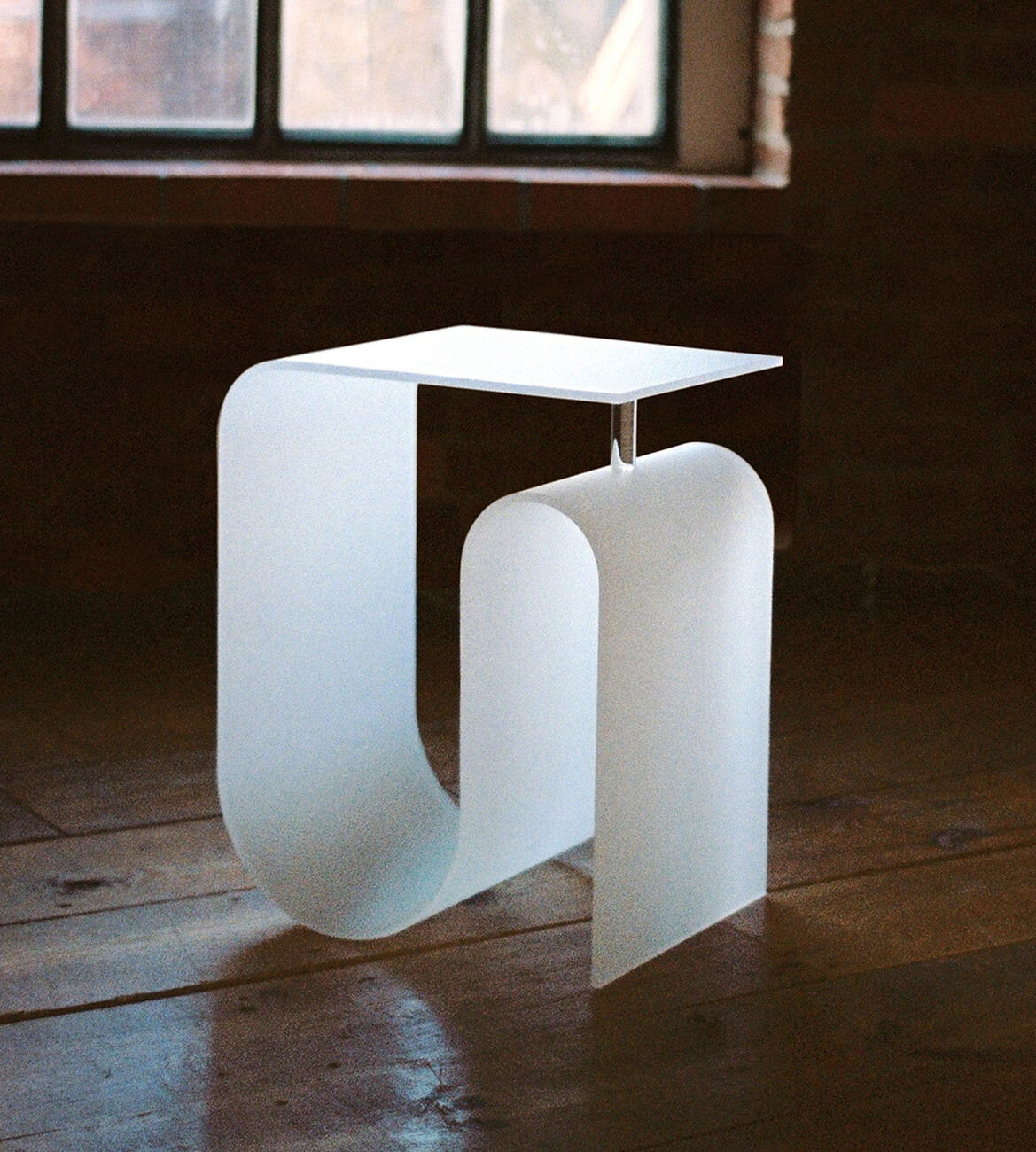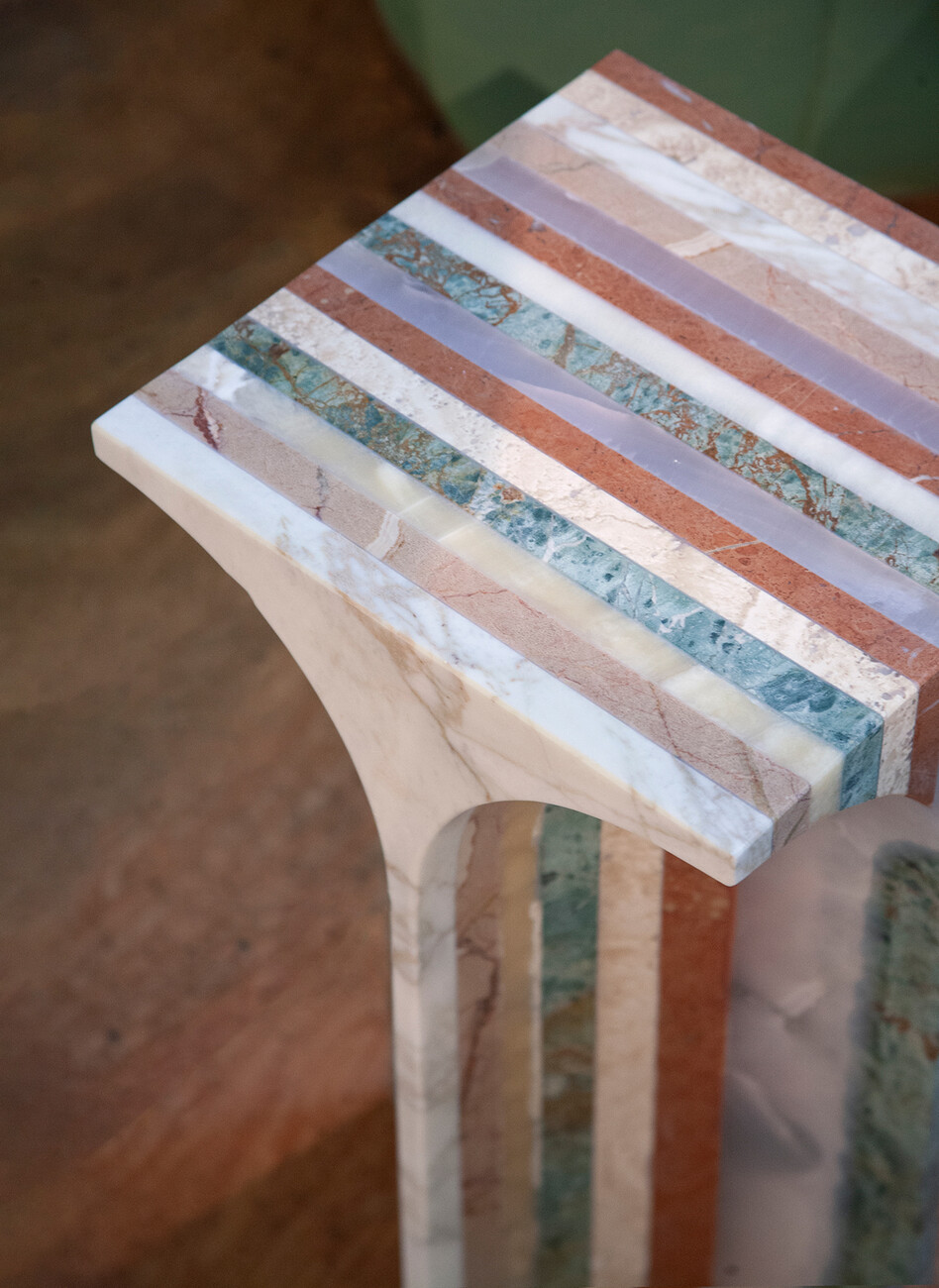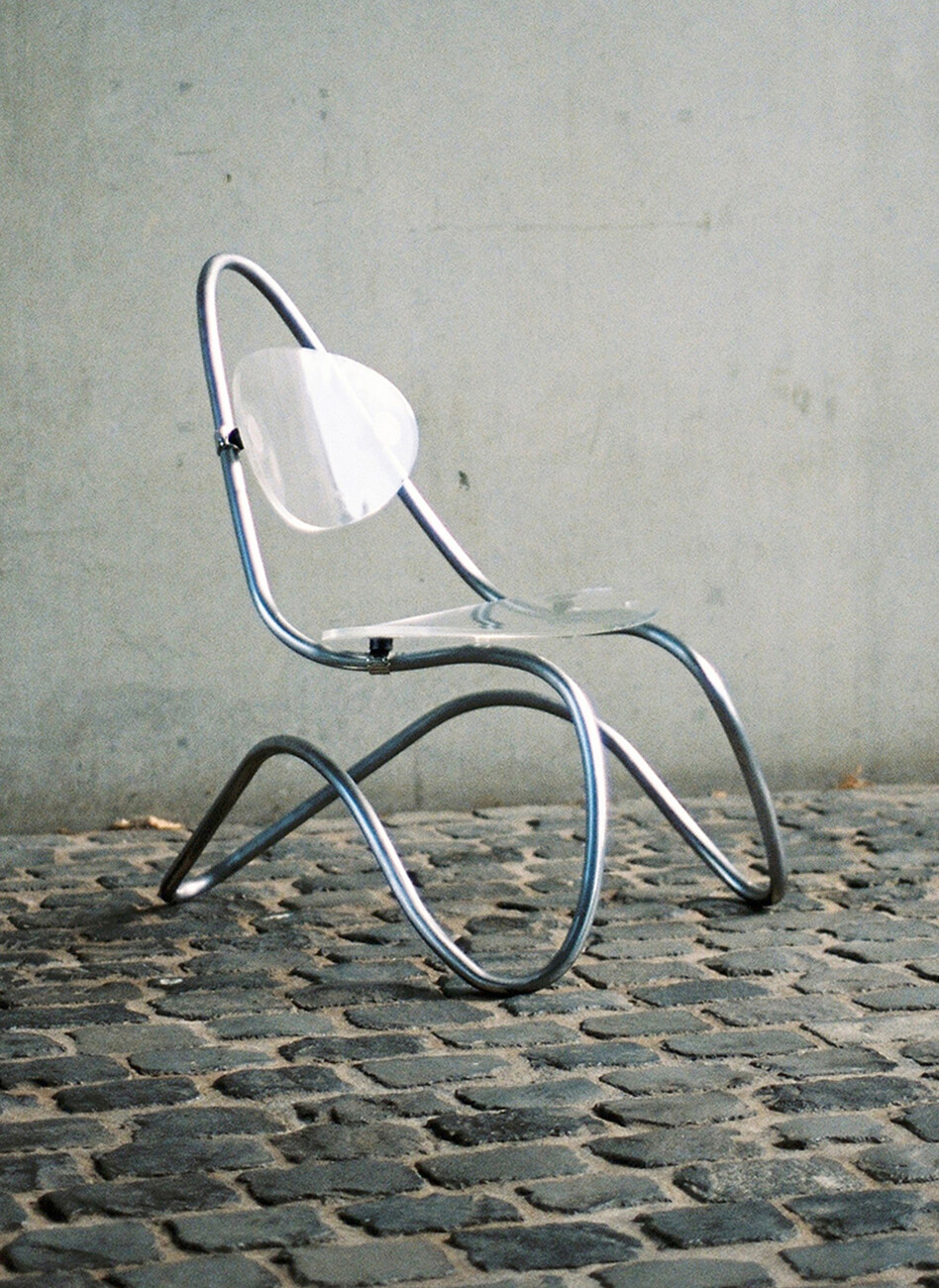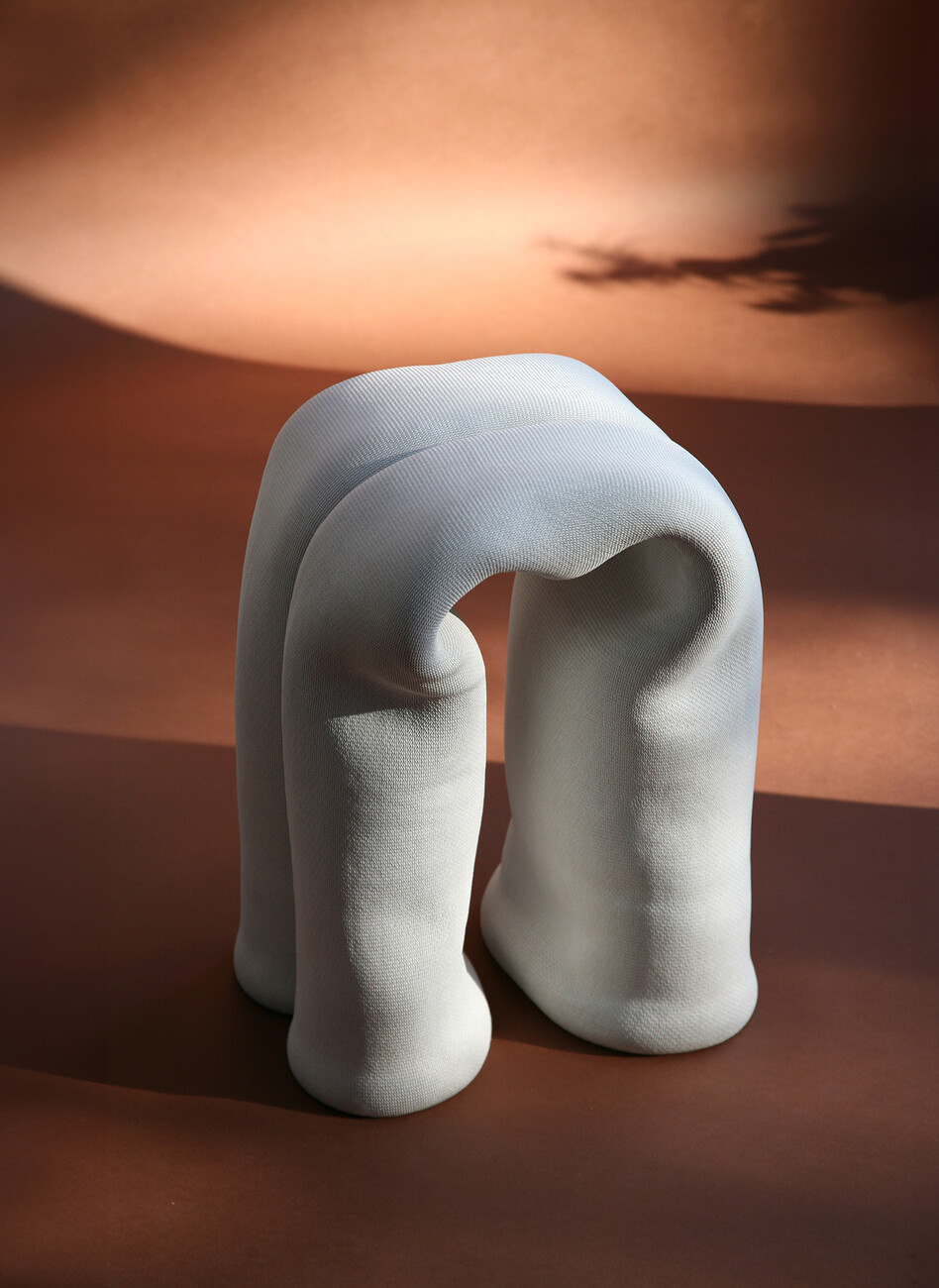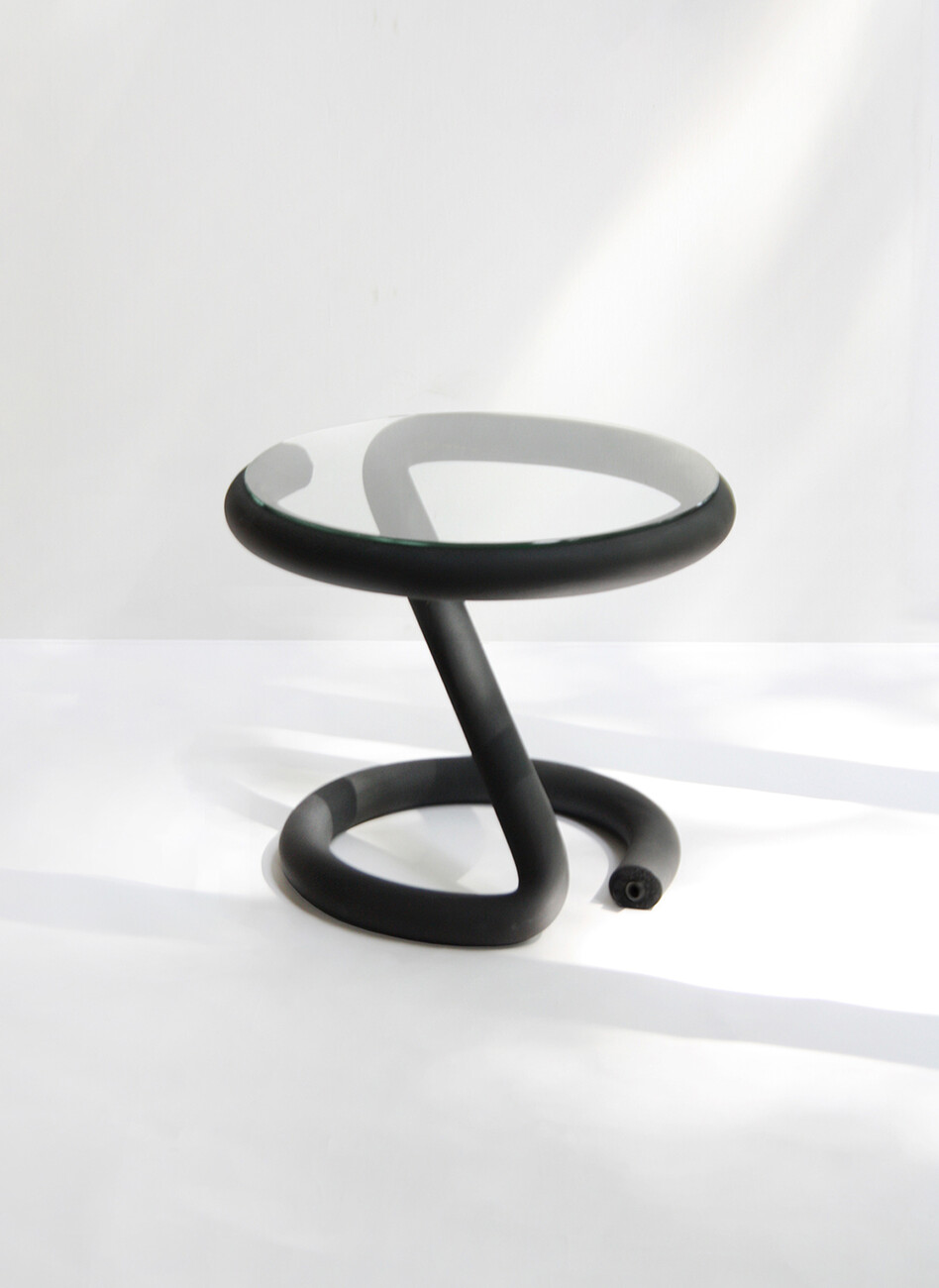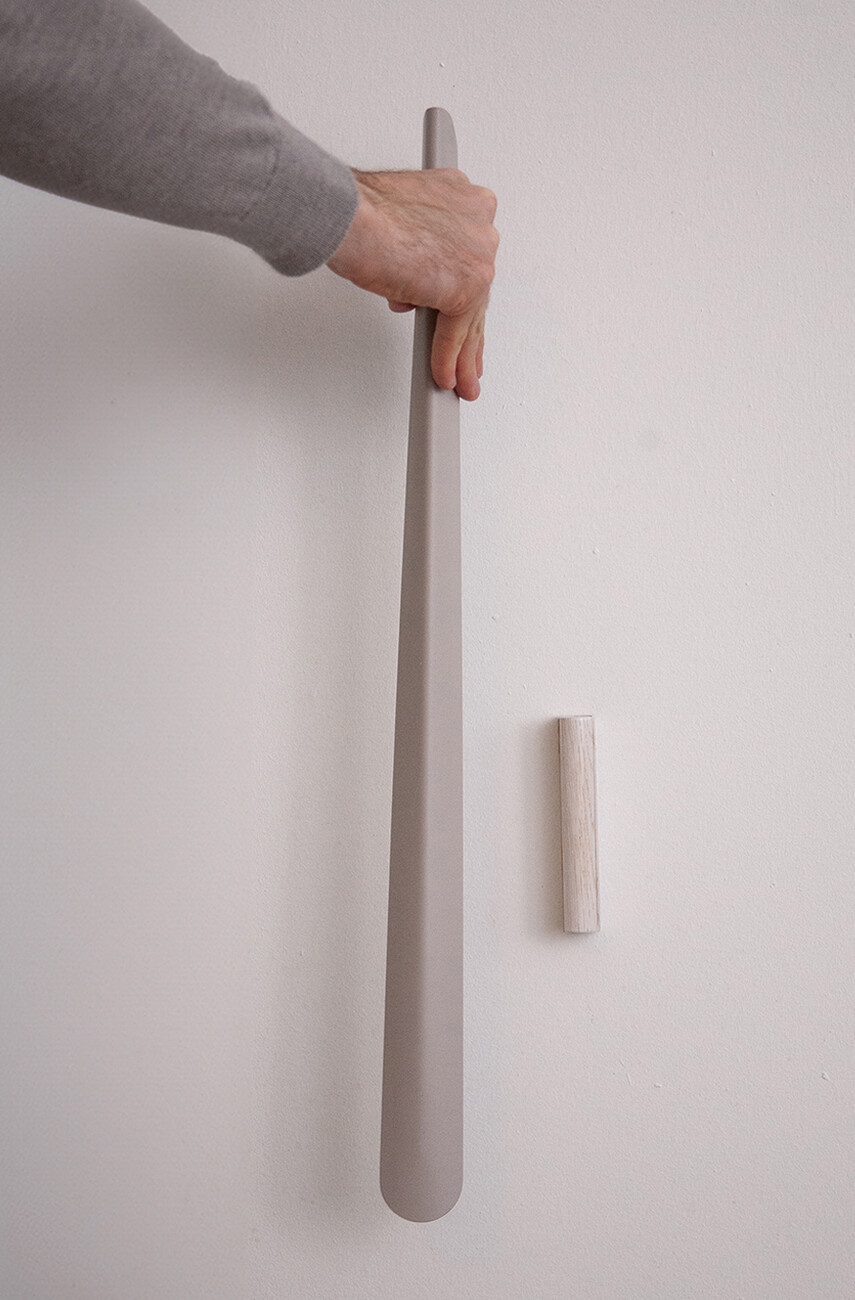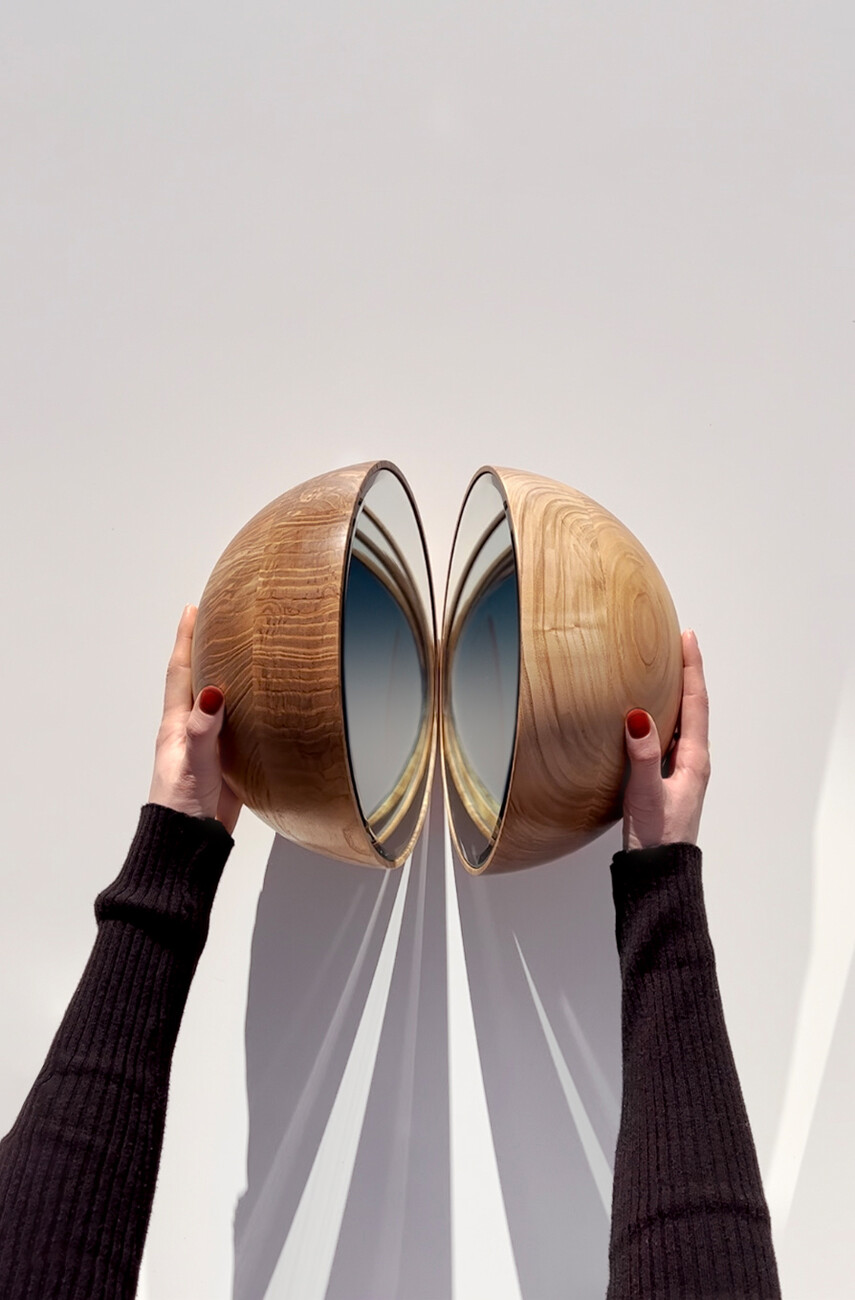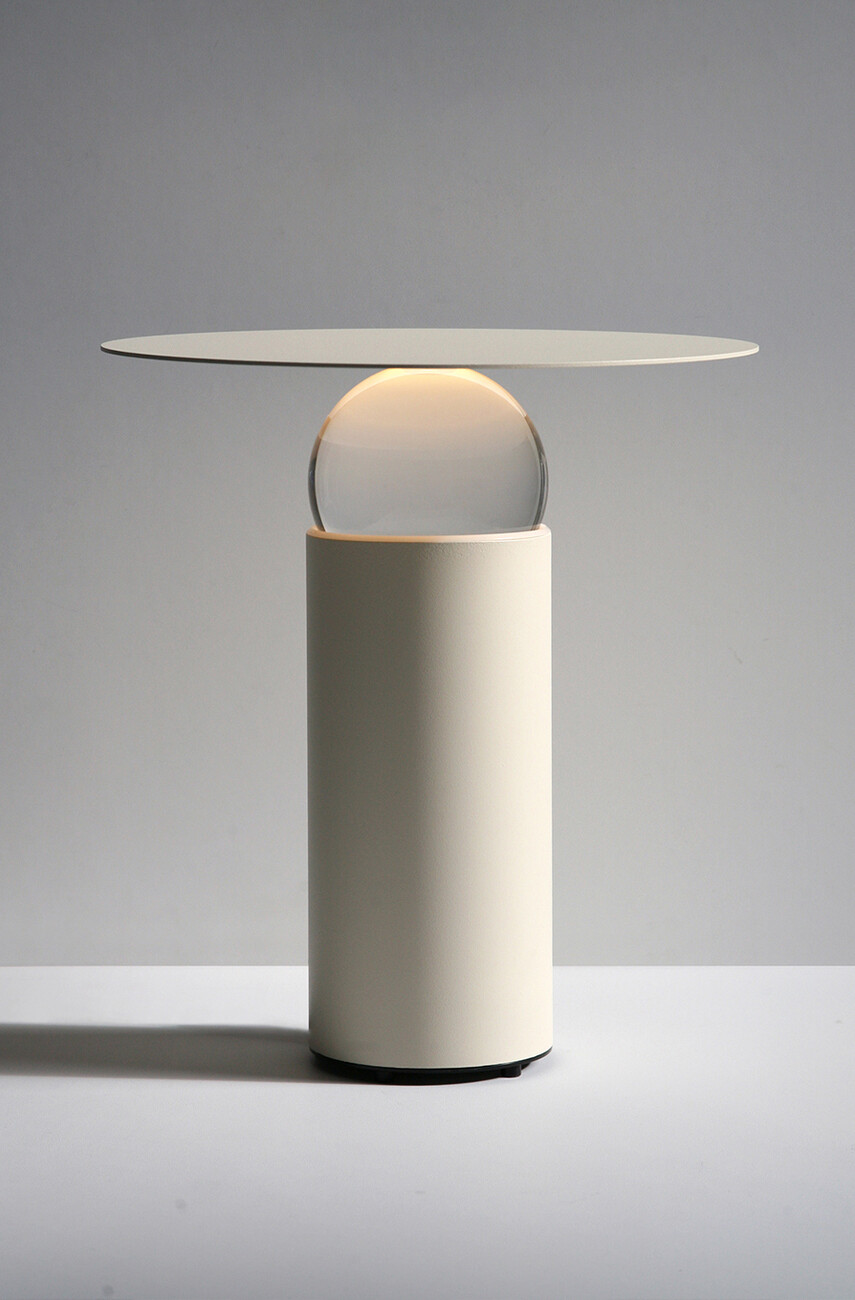YOUNG TALENTS
Smooth transitions
One of Budde's current works – created by architect Johannes Budde and brand manager Meike Papenfuß – is the small "Rug'n Roll" concrete stool, which is as unusual as it is appealing with its crumpled, flowing shape and is more reminiscent of soft textile furniture than a seating object made of hard building material. "'Rug'n Roll' was not the result of a specific design concept, but of a fascination for an exciting industrial material," explains Johannes Budde. The concrete composite material Concrete Canvas is initially as soft as a carpet and can be shaped freely. Budde worked out a specific rolling technique in which he only roughly defines the shape of his object. The material itself virtually shapes the final form: The waves and folds that arise when rolling are a deliberate result of chance. They make each stool unique. After moulding, each stool is watered. Thanks to an integrated layer of concrete powder, it becomes rock-hard and robust, but retains its textile surface and soft appearance. "We want to give the industrial material a new lease of life by using it in a different context," says Johannes Budde.
It was only in 2019 that Johannes Budde and Meike Papenfuß founded their office, which offers living culture, furniture and lighting – the latter as exclusive collector's items or as scalable designs for the commercial market. Although the starting conditions in the middle of the coronavirus pandemic were anything but ideal, the two recognised their special opportunity here: "We had no choice but to present our designs exclusively online for the time being. We specifically used social media and other online channels to build our reach and network with other creatives," says Meike Papenfuß. This may be one of the factors behind the studio's stellar career: While Johannes Budde, as a former architect, is responsible for all designs, she has strategically built up the "Budde" brand from the very beginning. "We are convinced that a studio needs both for success and growth: good design and strategic marketing," say the duo.
Meike Papenfuß holds a Bachelor's degree in Design Management and a Master's degree in Business. After graduating, she started as a strategist at the renowned agency Interbrand in Cologne. While there, she worked on international projects that mostly combined design and strategy. It is precisely this interface that she specialises in to strengthen brands and their customer relevance. Papenfuß remained at Interbrand for almost five years – most recently as a part-time senior consultant alongside Budde, until she took the plunge into full self-employment. Johannes Budde's career was completely different. After studying architecture in Stuttgart and Vienna, he initially moved to Düsseldorf, where he worked at the Falkenberg architecture firm. At some point, he needed some time out to create space for experimentation and reflection. "That was the most important decision for my career. I started making art again and then casually designed my first pieces of furniture."
Whether it's the "Up" or "Cut" tables, the "James" coat stand or "Rug'n Roll" - Budde furniture shares a common thread: the fluidity of its design. "Our designs are characterised by a common essence," explains Johannes Budde. "We focus on shapes that integrate seamlessly into different living areas. For me as an architect, furniture is an integral part of a room. The aim is to create a meaningful and authentic design that is intuitively coherent." However, this does not mean that Budde favours minimalist design. An idea can also become particularly clear in a complex form. "In the end, it is important to us that our design is understandable and accessible on an emotional level and without explanation."
Like one of the latest works, the "Five x Seven" collection, which is presented exclusively at Rossana Orlandi in Milan and was created in collaboration with "SolidNature", a leading global supplier of the finest natural stone: five different tables and a console are made from marble remnants, as a composition of seven different types. Each product displays the unique colours, textures and characteristics of the respective type of marble. The design studio does not follow a rigid or recurring process. It is also in a state of flux, so to speak, characterised by openness and curiosity, and is allowed to develop on a project-by-project basis. Sometimes the design phase begins with a specific material. Projects also often start with a rough idea that is quickly converted into digital 3D models, which then leads to further directions. "The process is always exciting: I often revise or discard aspects of the original design idea until I finally arrive at the final design. It's a constant process of trying out and adapting form, function and material," says Johannes Budde.
The result is the "Collectible Designs", which Budde continues to produce himself in Cologne. These works are available directly from Budde or from galleries such as Rossana Orlandi or Mint Gallery in London. These scalable designs are realised by Budde in collaboration with strong partners. One of them is "Metallbude" from Detmold, for whom Budde developed the "James" clothes storage unit, or the Dutch company Spinder Design, for whom the duo designed a hallway furniture collection that was presented at imm cologne 2024. This year, further products will be added with an Italian and a Danish brand.
"2024 will be an exciting year full of innovations," says Meike Papenfuß. Budde is currently busy preparing for Milan Design Week in April 2024, for example, the result of a collaboration with BWB Oberflächentechnik, a Swiss company specialising in electrolytic, chemical and galvanic finishing, will be on display. Here, Budde has experimented with anodising aluminium to create "colourful works of art". "We integrate these into a piece of furniture," reveals Johannes Budde. The designer has not ruled out architectural projects either: "For example, I would find it very exciting to design the interior of a fashion store."
The groundwork is already being prepared: The design duo, who are keeping their location as flexible as possible for strategic reasons, are planning to spend several months in the fashion and design city of Milan this year. "We have several partner companies there and love the country and the culture. Our studio is a nomad, so to speak," they say.
